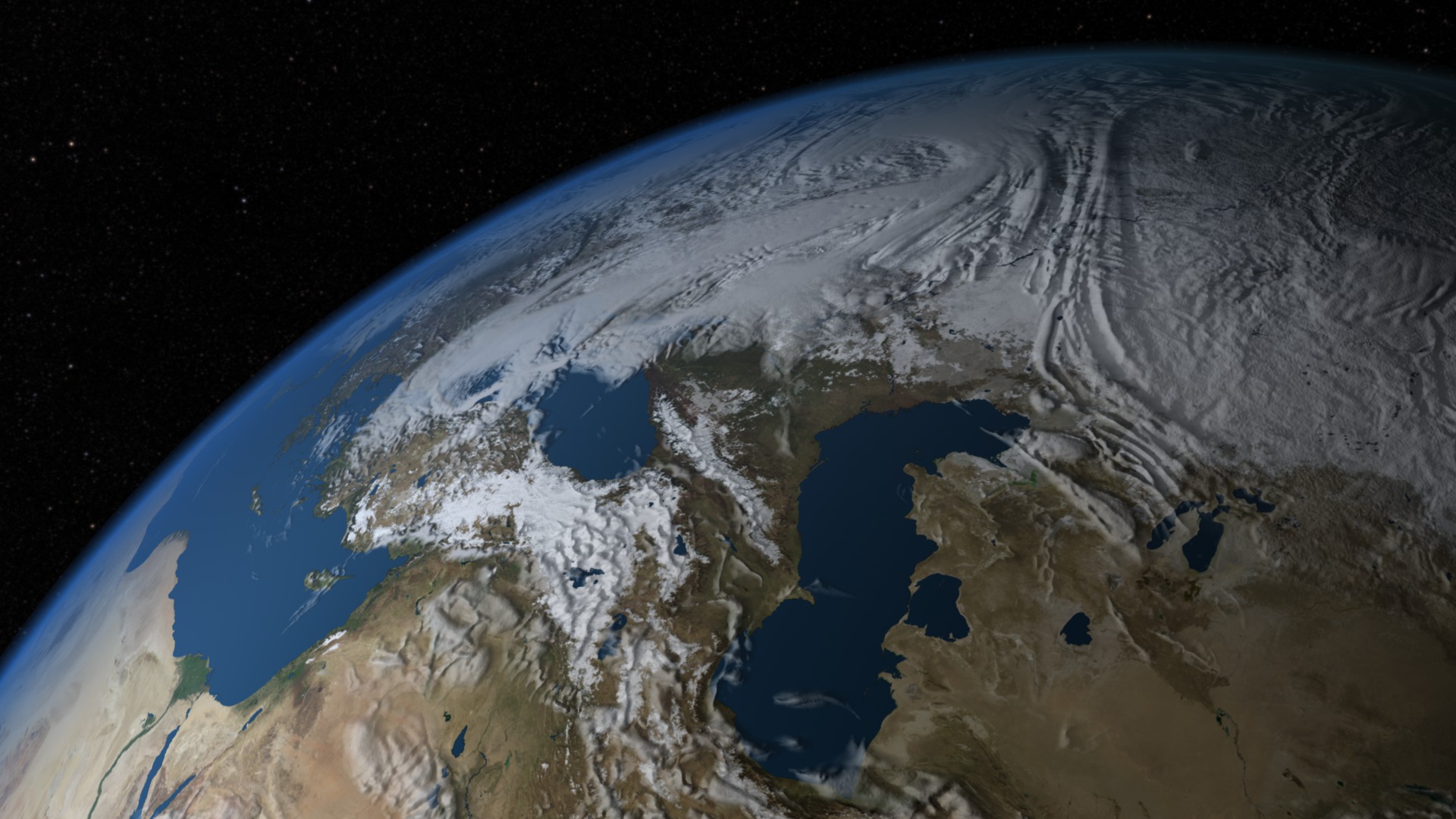Virtual Sky
Europe owes much of its weather to prevailing winds known as the westerlies. These consistent breezes, created in part by the planet’s rotation, blow from the west, bringing rain and moisture from the Atlantic Ocean to the continent. They also influence the migration of clouds. Throughout the year, the winds carry clouds east above Europe's vegetated, and sometimes snow-covered, landscape. Using a NASA supercomputer climate model called GEOS-5, scientists are able to simulate cloud movement over Europe and other parts of the world. Such models can help improve scientists' understanding of Earth's climate. In GEOS-5 simulations of Europe’s atmosphere, computer-generated clouds take on the appearance and motion of clouds imaged by Earth-observing satellites and astronauts aboard the International Space Station. Watch the video to see 15 days of simulated cloud changes across Europe.

Computer-generated clouds reveal a key aspect of Europe’s meteorology.
This GEOS-5 simulation of Europe's atmosphere models changes during February 2010.

A satellite image shows the breadth of cloud cover across Europe on Sept. 1, 2012.

This comma-shaped cloud formation brought a strong snowstorm to northern Europe on Jan. 9, 2005.

Clouds move south of Ireland and the United Kingdom in this image taken from the International Space Station on May 27, 2012.
Credits
Please give credit for this item to:
NASA's Goddard Space Flight Center
Satellite images courtesy of NASA Earth Observatory
International Space Station image courtesy of NASA/Johnson Space Center
-
Animators
- Alex Kekesi (Global Science and Technology, Inc.)
- Ernie Wright (USRA)
-
Producer
- Ryan Fitzgibbons (USRA)
-
Scientist
- William Putman (NASA/GSFC)
-
Writer
- Patrick Lynch (Wyle Information Systems)
Release date
This page was originally published on Thursday, September 19, 2013.
This page was last updated on Wednesday, May 3, 2023 at 1:51 PM EDT.
